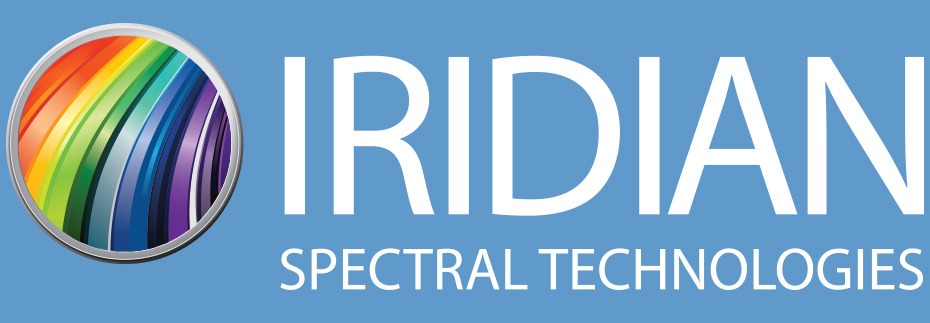Satellite communications (satcom) plays an essential role in global communications1 and with an ever-increasing number of satellite networks present, satcom is likely to be responsible for greater percentages of the world’s data transmission requirements.2
The nature of how information is transmitted and the distances involved in satcom does pose some unique challenges for the optical components involved in satcom networks. For example, the desired satcom signal that contains the information of interest is often very small in contrast to a large background of solar electromagnetic radiation, and a significant amount of beam divergence can occur over the very large transmission distances.
Terrestrial fiber networks avoid many of the issues faced by satcom networks. The use of optical fibers means there is a waveguide to help avoid issues with divergence.3 Greater data transfer bandwidth are possible with fiber bundles and multiplexing approaches where multiple wavelengths of light can be transmitted in a single fiber.4 While there does need to be careful use of optical filters to minimize crosstalk or interference between channels, generally terrestrial fiber networks do not suffer with the same background issues that satcom networks can.
However, while terrestrial fiber networks are good for large scale data transfer, ensuring global coverage requires the utilization of satcom networks in conjunction.
Satcom Filters versus Terrestrial Fiber Networks
The right choice of optical satcom filters is therefore very important when designing a satcom network. Listed below are several aspects for consideration when choosing filters and some of the key differences between desirable characteristics for satcom filters and those for terrestrial fiber networks.
Signal Propagation and Medium: Satcom filters are designed to handle signal transmission in space. Satcom filters therefore benefit from including Solar Rejection Windows – where the transmission of wavelengths in the solar spectrum is blocked to only allow the signal to pass through alongside very high transmission in the signal region to minimize signal losses.
For terrestrial fiber networks, filter design is often focused on enabling wavelength division multiplexing (WDM) to manage different wavelength regions effectively as well as minimizing signal loss and managing dispersion over long transmission distances.
Environmental considerations: Satcom filters are used in some of the most extreme environments, where extreme temperatures and radiation exposure and damage are serious considerations. Satcom filters have to be designed not just to withstand such conditions but for solar rejection window filters or band-pass ‘clean-up’ filters, the filters need to maintain signal integrity often by ensuring low transmitted wavefront error.
Terrestrial fiber networks can face similar extreme environments, such as when they are used in submarine systems and need to have very long operational lifetimes. Operational lifetimes can exceed 20 years, whereas for satcom filters, operational lifetimes are usually in the order of 5-7 years. While standard components are often sufficient for terrestrial parts, sometimes temperature stability and active cooling should be considered and high resistance to moisture ingress is essential.
Interference and Noise Management: For satcom filters, selectivity is key due to interference from the solar spectrum. Satcom filters often involve combinations of dichroic beam splitters and combiners to effectively separate and direct different wavelength bands, helping avoid large backgrounds from solar radiation or allow transmission of multiple channels, while maintaining a high signal-to-noise ratio.
For terrestrial networks, the focus of the filters is to minimize cross-talk and any additional interference from electrical noise.
Power and amplification: Optical filters, whether satcom filters or terrestrial, have zero power consumption. As amplification of signals is not an option with filters, it is necessary that filters have a low wavefront error and high transmission to reflectance ratios to prevent small divergent signals.
For terrestrial fiber networks, the power situation is less critical as reliable power supplies can be used and it is possible to use high-powered optical amplifiers like Erbium-Doped FiberAmplifiers (EDFAs) to maintain signal strength. With high-powered optical systems, it can be beneficial to use gain flattening filters to ensure uniform amplification across the complete signal band range of use.
Iridian’s Designs
Iridian Spectral Technologies are specialists in high-quality optical filter design and manufacture, with years of experience in supplying satcom filters and those for terrestrial fiber networks. Our satcom filter solutions are optimized for low power consumption with compromising filter performance.
References and Further Reading
- Pratt, T., & Allnutt, J. E. (2019). Satellite communications. John Wiley & Sons. https://www.wiley.com/en-gb/Satellite+Communications%2C+3rd+Edition-p-9781119482055
- Kodheli, O., Lagunas, E., Maturo, N., Sharma, S. K., Shankar, B., Montoya, J. F. M., … Goussetis, G. (2021). Satellite Communications in the New Space Era: A Survey and Future Challenges. IEEE Communications Surveys and Tutorials, 23(1), 70–109. https://doi.org/10.1109/COMST.2020.3028247
- Kuang, L., Jiang, C., Qian, Y., & Lu, J. (2018). Terrestrial-satellite communication networks. Cham, Switzerland: Springer. https://doi.org/10.1007/978-3-319-61768-8
- Grobe, K. (2013). Optical Wavelength-Division Multiplexing for Data Communication Networks. Handbook of Fiber Optic Data Communication: A Practical Guide to Optical Networking: Fourth Edition. Elsevier Inc. https://doi.org/10.1016/B978-0-12-401673-6.00005-2
